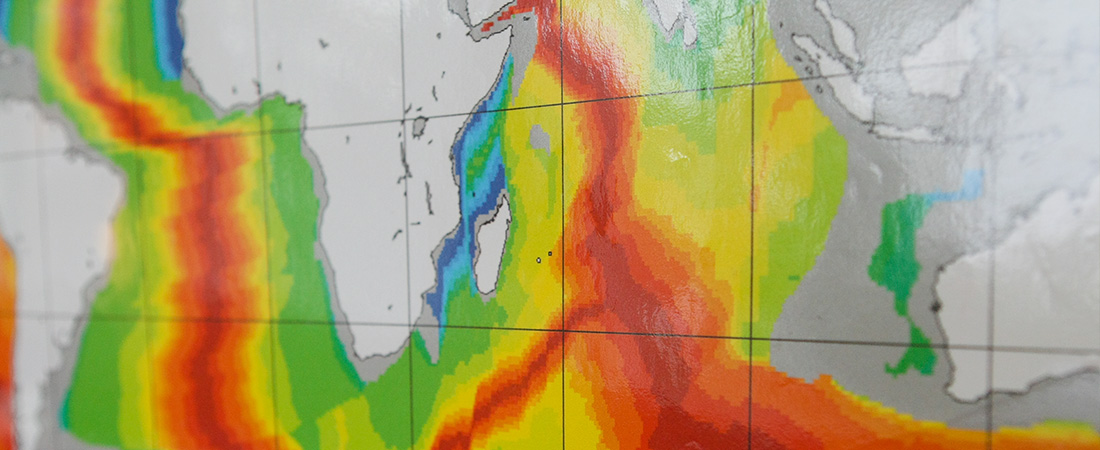With Big Data, New Frontiers

In industries around the country, big data is a big buzzword—and it continues to gain momentum.
Responding to the increasing importance of data to drive decision making, EDC has launched a new initiative to boost students’ abilities to make sense of data. Through the Oceans of Data Institute, EDC will look at how big data can inform mathematics and science education, with an eye toward preparing students to live and work in the 21st century.
“The growth of big data has given rise to a whole new class of questions that need to be asked and answered,” says Wayne Harvey, the director of science and mathematics programs at EDC. “We need new tools to help students learn techniques for seeing patterns in big data, and for analyzing and interpreting data in ways similar to those practiced by scientists and mathematicians.”
The “bigness” of big data lies in the mountains of information that are currently being collected and stored in online databases. For example, the National Oceanic and Atmospheric Administration (NOAA) continuously gathers data on water temperature, wind speed, and wave height from buoys deployed throughout the world’s oceans. Although this information is used to monitor weather patterns, a deeper mining of it may yield new insights about the relationship between weather patterns and ocean trends.
This is one of the promises of big data—that plumbing these massive data sets will lead to scientific discoveries. The challenge, according to Harvey, is to help K–12 students develop strong skills for analyzing and interpreting data so they are prepared for the changing economic and scientific realities.
“We want to help students learn to think scientifically, given big data as a tool,” he says.
Enter the Oceans of Data Institute. Through it, EDC will help educators bring big data to classroom-based science and mathematics education. Institute staff will assemble experts from diverse fields, including science, industry, and informatics, to shape new opportunities for classroom instruction.
New skills, new standards
The increasing importance of big data will likely lead to far-reaching changes well beyond the classroom. A 2011 study by the McKinsey Global Institute estimated that the domestic demand for data analysts could greatly outstrip the available supply, perhaps by as much as 190,000, in 2018. There will be a need for data-savvy employees well beyond the information technology fields as well. All sectors of the economy are trying to make sense of the growing torrent of consumer preferences, medical information, and scientific data that is now available.
Where there is big data, there is big economic opportunity. Harvey agrees that future business and scientific realities will require students to develop new kinds of data skills in order to compete economically. He believes that growing a data-savvy populace has civic importance, too.
“With so much data available, how do you understand your world so you can navigate it effectively?” he asks. “These analysis skills can help people make good choices.”
The institute is being led by Ruth Krumhansl, a former geologist and science teacher who is particularly interested in creating digital interfaces that allow professionally created data sets to be used in mathematics and science classes. It begins its work at a time when science class is already changing. The newly released Next Generation Science Standards (NGSS) is an effort to update and align K–12 science expectations across the country, and emphasizes many of the skills needed for success in a more data-intensive world.
“Data is vastly more prominent in the new standards,” says EDC’s Kim Kastens. To illustrate this point, she opens a copy of the National Science Education Standards from 1996, the document that the NGSS is replacing. She flips to the index. The first entry under D is “diet and nutrition;” “data” does not appear at all.
In the days before the NGSS, data analysis activities were often treated as add-on activities in textbooks. Students seldom looked at real, professionally gathered, data sets that offered proof for hard-to-observe concepts, such as plate tectonics. But the new standards have elevated the importance of data considerably: “analyzing and interpreting data” is one of eight practices specifically identified as being important in the development of students’ understanding about what it takes to be a scientist.
As curricula to support these standards are rolled out, students will find data sets accompanying the expected pictures and models of scientific phenomena. Data will be fully integrated into the learning experience, not seen as a separate sphere.
“There are huge opportunities in science to learn new things,” says Kastens. “Students need to learn how to use data to solve real problems. Data can’t be on the sidelines anymore.”
